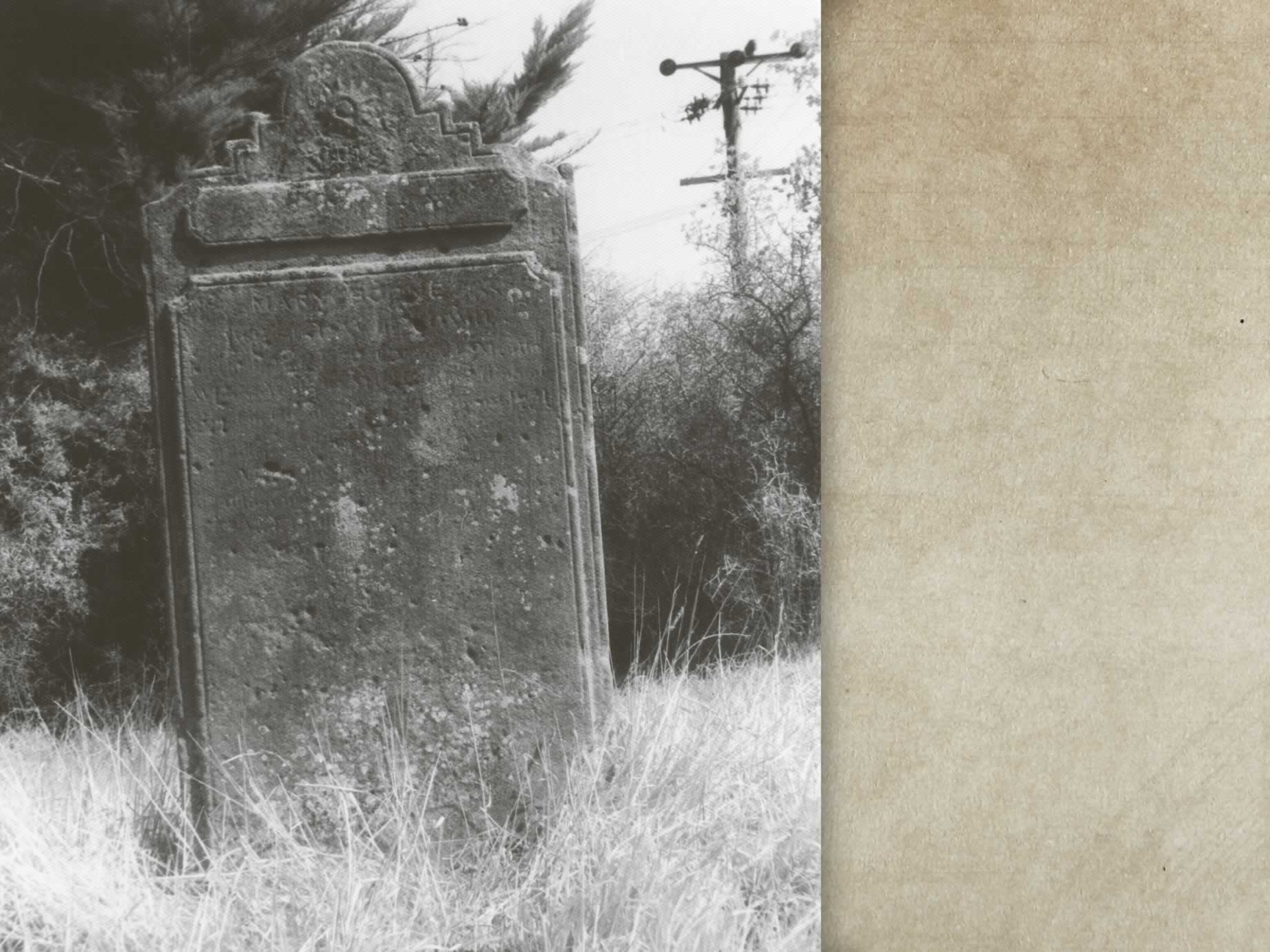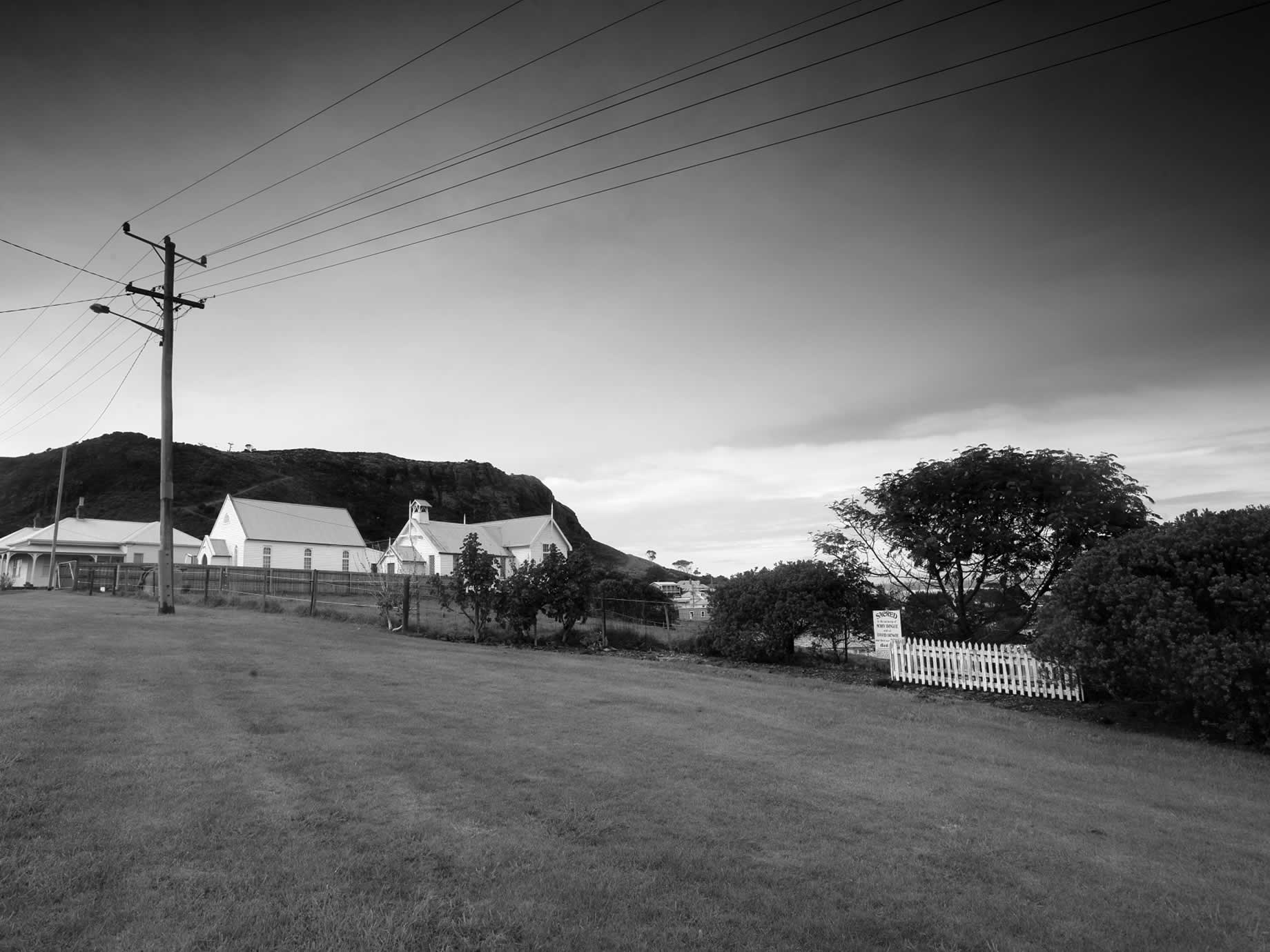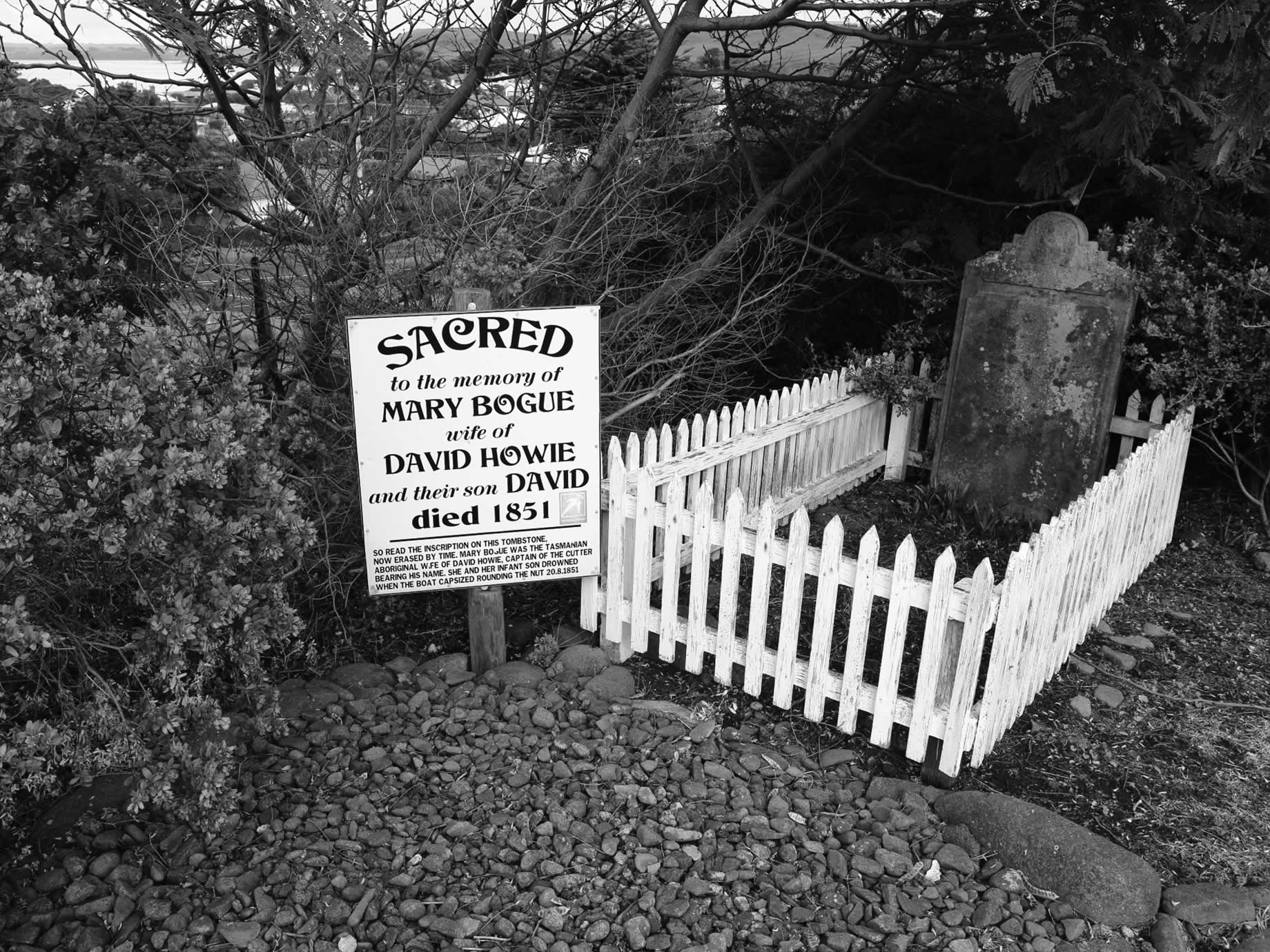12 Mary Bogue’s Grave
Corner Fletcher Street

In this paddock adjoining St James’ Presbyterian Church lies the grave of Mary Bogue, a Tasmanian aboriginal woman also known as Black Mogg.
Her death is surrounded by myth and legend, but Meg detailed the tragic tale of Mary Bogue in her bestselling book Historic Stanley.
Mary lived with David Howie, a former convict turned constable for Bass Strait, and the master of the cutter bearing his name.
On August 20th, 1851, Howie, Mary and their infant son were making a voyage from Robbins Island, which Howie leased, to Stanley aboard the David Howie when it was caught in a sudden squall rounding the Nut, capsized and sank. Howie was rescued, but the bodies of Mary and her son David were found trapped in the cabin when the cutter was raised.
At the time of Mary’s drowning, it would only take another 30 years of European settlement for the entire Tasmanian aboriginal race to be annihilated. Aborigines had survived in the area for thousands of years, with one of the largest occupation sites further west at West Point Midden.
This part of Van Diemen’s Land might have been “beyond the ramparts of the unknown” to Europeans, but the elephant seal colonies of Three Hummock Island, the crayfish and abalones, the penguins and shearwater colonies from Table Cape, to Cape Grim and Macquarie Harbour were home to the nomadic family groups who lived off the sea.
The pebbled grave with its white picket fence and weathered inscription stands alone in a paddock, perhaps an indication of Mary’s common law status and her illegitimate child. Records show that David Howie attended the first meeting to establish a Presbyterian Church in Circular Head, and the stone was offered as a gift from the VDL Company to the Presbyterian faith.
Listen
Listen to the story of this location while you walk
View Map
Explore the Stanley Heritage Walk route on our map of the region
Image gallery
Images gathered from Meg’s personal albums and other historical sources



